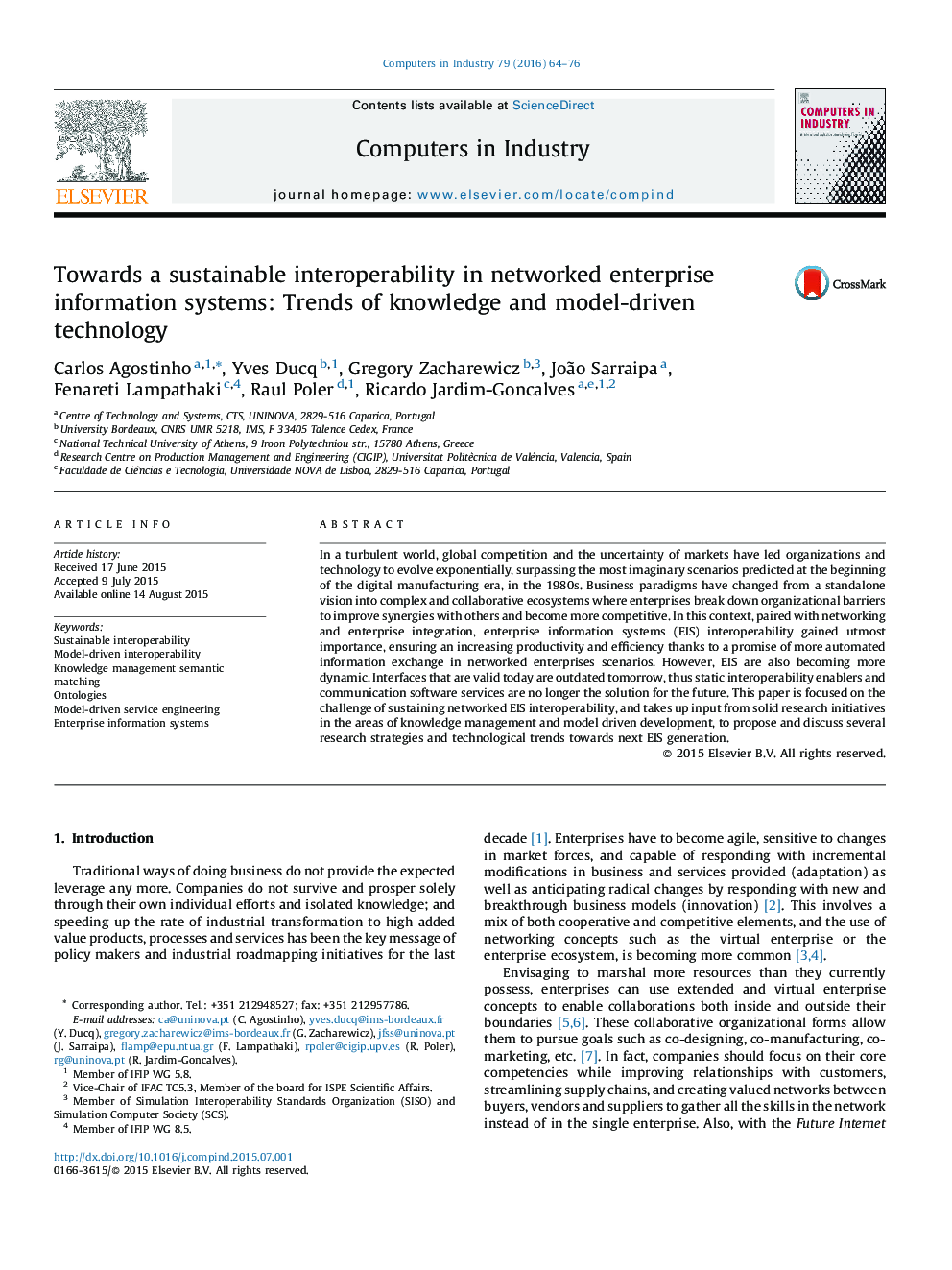| Article ID | Journal | Published Year | Pages | File Type |
|---|---|---|---|---|
| 508589 | Computers in Industry | 2016 | 13 Pages |
•Sustaining interoperability in enterprise networks is the next research challenge.•Not understanding the impact of a single system change may cause network failures.•Pervasive information models and EA can support dynamic interoperability enablers.•Combined use of model-driven and knowledge-based approaches can improve NG-EIS.•We present and discuss the sustainable interoperability research framework.
In a turbulent world, global competition and the uncertainty of markets have led organizations and technology to evolve exponentially, surpassing the most imaginary scenarios predicted at the beginning of the digital manufacturing era, in the 1980s. Business paradigms have changed from a standalone vision into complex and collaborative ecosystems where enterprises break down organizational barriers to improve synergies with others and become more competitive. In this context, paired with networking and enterprise integration, enterprise information systems (EIS) interoperability gained utmost importance, ensuring an increasing productivity and efficiency thanks to a promise of more automated information exchange in networked enterprises scenarios. However, EIS are also becoming more dynamic. Interfaces that are valid today are outdated tomorrow, thus static interoperability enablers and communication software services are no longer the solution for the future. This paper is focused on the challenge of sustaining networked EIS interoperability, and takes up input from solid research initiatives in the areas of knowledge management and model driven development, to propose and discuss several research strategies and technological trends towards next EIS generation.
